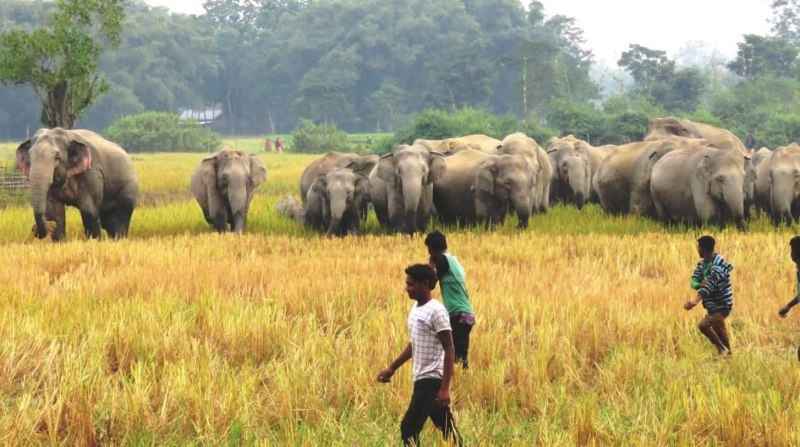To address the ongoing human-elephant conflict (HEC), a solar-powered electric fence has recently been installed in Udalguri district, Assam. Collaborating with ‘The Aaranyak,’ a wildlife NGO based in Guwahati, the Forest Department has successfully installed a seven-kilometer-long, community-managed single-strand solar-powered fence.
This initiative aims to safeguard the property and livelihood of approximately 170 families and protect around 500 bighas of cropland in Kundarbil village. The solar-powered electric fence, recognized as an effective tool in mitigating HEC, was formally handed over to the community during an inauguration ceremony. Funding for this solar fence installation has been provided by the SBI Foundation as part of a project dedicated to mitigating HEC in the region.
Patrosh Daimary, the Village Council Development Committee (VCDC) chairman of Kundarbil, inaugurated the fence at Rupa LP School, Number 3 Kundarbil ground, in the presence of around 100 people. He expressed gratitude to Aaranyak and the Forest Department for their support in addressing HEC and ensuring the well-being of the local population.
Local reports indicate that elephants from the nearby forest frequently venture out in search of food, posing a threat to the community. Anjan Baruah, Aaranyak’s solar fence expert, led the installation process with support from Aaranyak’s team and the villagers. During the inauguration, Baruah interacted with villagers, providing detailed instructions on maintaining the fence for longevity and promoting harmonious coexistence between humans and elephants.
In a related development, the Tamil Nadu Forest Department has been monitoring wild elephants in the Gudalur and Pandalur areas of the Nilgiri district, addressing increasing incidents of human-wildlife conflict. The State government formed an expert committee in 2022 to propose measures for minimizing such interactions in the Gudalur forest division.
An expert committee, formed by the TN government in 2022, recommended various measures to reduce human-elephant interactions in the Gudalur forest division, including enhanced individual monitoring of elephants drawn to human settlements, radio-collaring of all elephants, and spatial zoning of areas to delineate conservation, coexistence, and exclusion zones. The widespread Asian elephant, due to its need for extensive resources, frequently encounters humans, resulting in conflicts causing damage to crops, property, injuries, and deaths.














